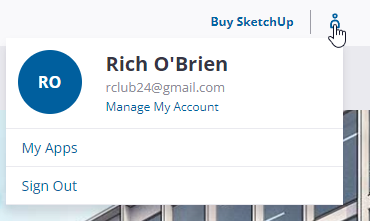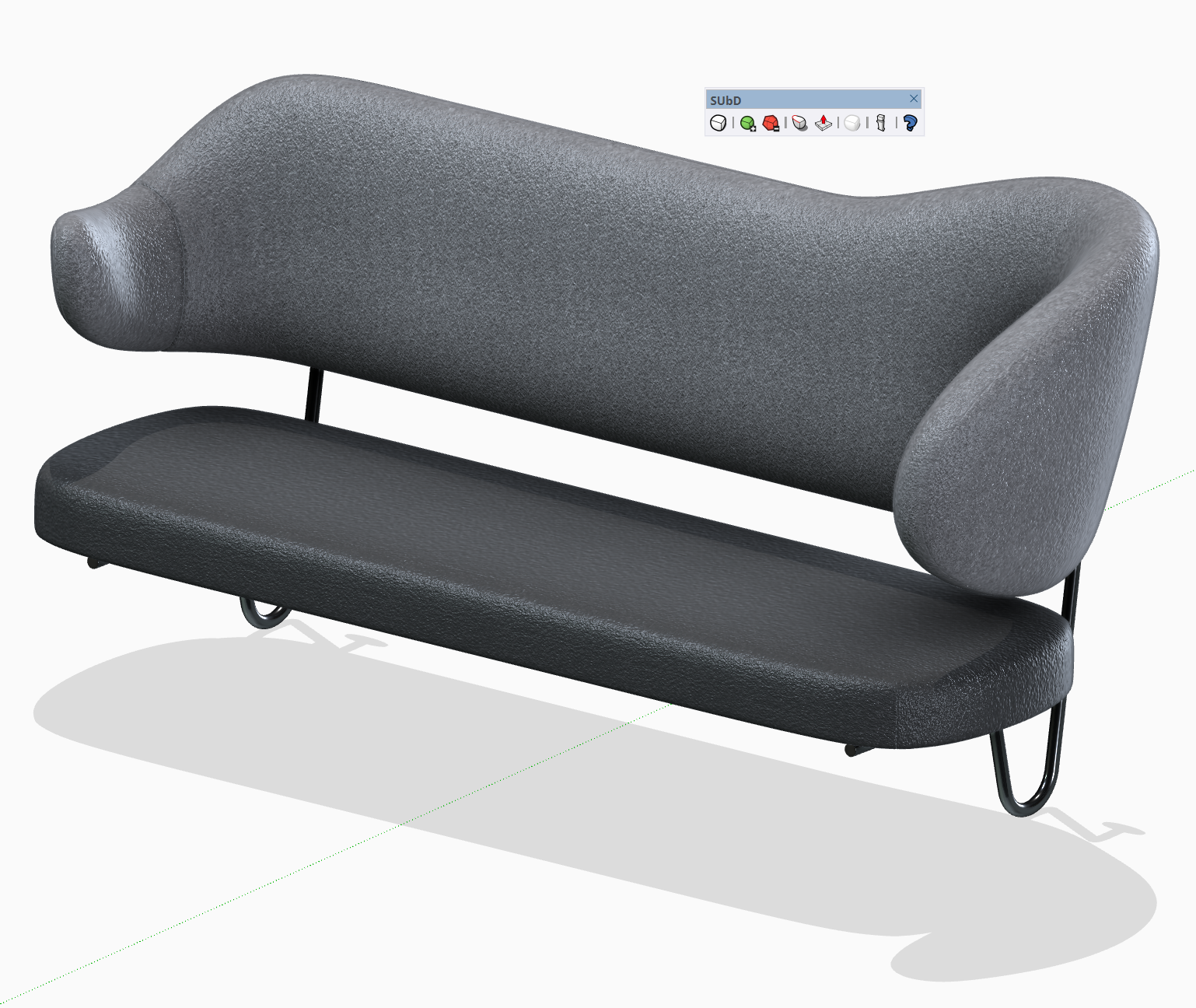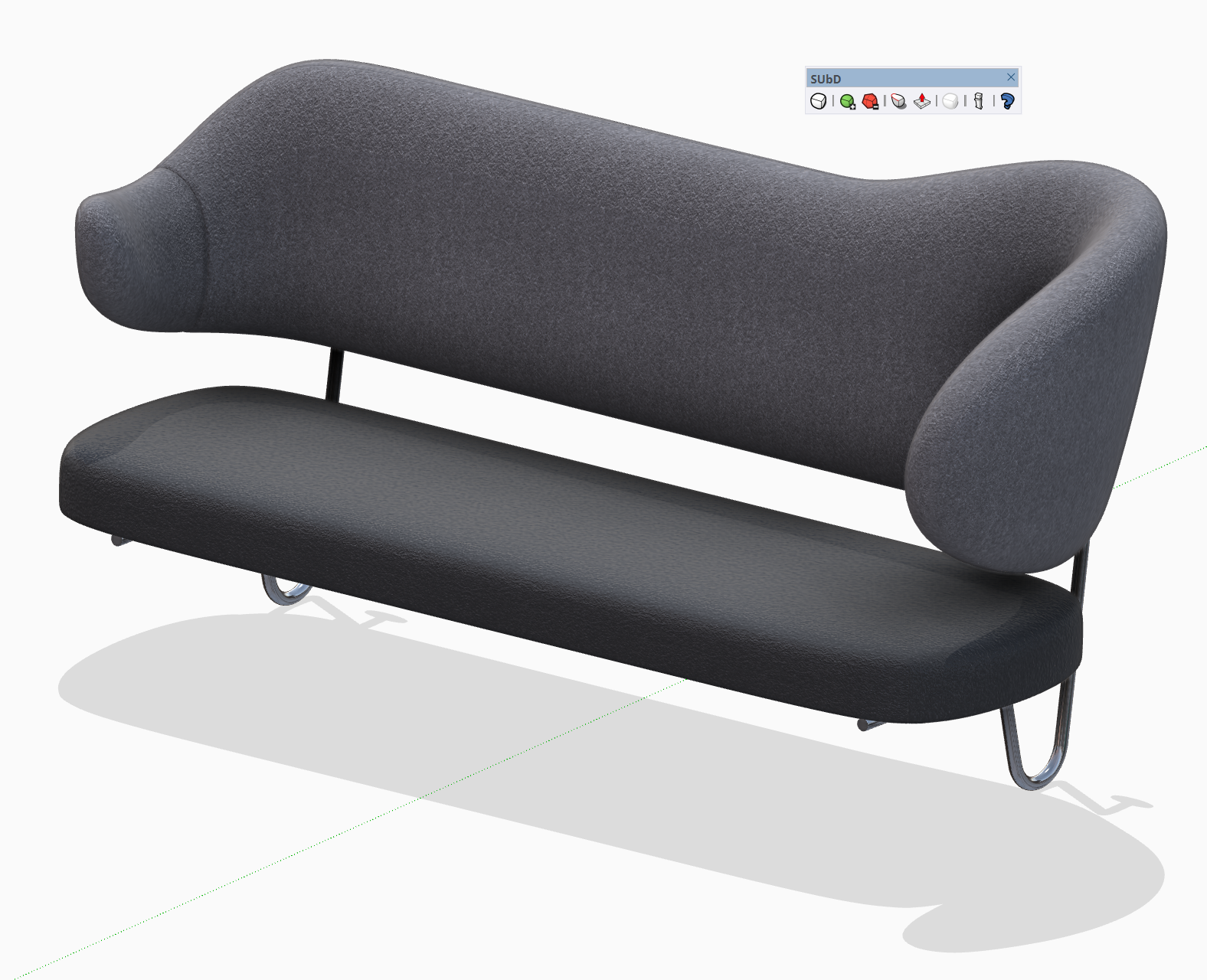Then try scanning it with your phone using RealityScan or PolyCam.
Rub some talc on it first to dull reflections.
You could then bake the texture to a proper lower poly model with better UVs afterwards.
Then try scanning it with your phone using RealityScan or PolyCam.
Rub some talc on it first to dull reflections.
You could then bake the texture to a proper lower poly model with better UVs afterwards.
@HornOxx said in How to get and activate a NEW SketchUp Pro:
but where do I get the software from? I can't find a download link anywhere.
https://www.sketchup.com/download/all
@HornOxx said in How to get and activate a NEW SketchUp Pro:
Where can I get the licence key (or is there another way of activating)?
When you login at sketchup.com there's a dashboard area where all your entitlements are. So you can download .exe, manage devices and more....

@HornOxx said in How to get and activate a NEW SketchUp Pro:
How can I control that I get an English language version then?
https://www.sketchup.com/download/all
Then scroll all the way to the bottom of the sketchup.com site and click the Do Not Sell My Info and submit the form so your data remains your commodity.
Displaying 3D geometry in a browser is different than manipulating geometry in a browser realtime.
A browser is not a dedicated app optimised to handle a specific 3D task like modelling or uv mapping etc.
A remedy would be to start with a file with untextured geometry. That would provide you with a performance baseline on how the web based version handles just geometry of a typical 'Liam' file.
If you see noticeable improvement then you could surmise that textures are impacting performance. Then make a pass on your textures to reduce their footprint and see if that improves performance.
But the short story is a web based app is not suited to a typical use case. Even though it accepts 100mb file upload sizes it is not guaranteeing you can work the file to same degree as the desktop app. Similar to how my TV remote has buttons with numbers but its not a calculator.
Horses for courses...
Another thing you can do is the rename the .style to .zip and poke around to see the stroke styles.
Best way to deconstruct is to load a style into StyleBuilder to see what setting were used where.
To me it looks like the dimensions of the texture for the material are not the same as the image.
I've encountered this when I create a material using a non-uniform texture dimension. Then I decide to switch the image texture for another non-uniform image.
You end up with a material that has its width and height skewed and resetting doesn't consider the image dimensions.
Did you try right clicking Texture > Reset
I believe the issues I'm seeing are extension related.
Try having the ruby console open while your painting to see if there's a clue.
@Mike-Amos said in Homebuild Hi-Fi.:
Rendered in Twilight to give a base level for Rayscaper attempts.
I want to get my greasy paws  on that model to see what we could do in Rayscaper.
on that model to see what we could do in Rayscaper.
Looks great in Twilight. Really nice job
Now that I've thought more you can actually also buy from within SketchUp. If you open the license dialog for any extension that requires a license there a purchase button there.
1.1a released and published
Thanks to @TutorialsUp for flagging rotate behaviour
Use StyleBuilder to export the Template to generate to linework.

You can print the template or use an image editor to add linework to the boxes.
The environment maps included play a big role to get a suitable appearance...


The roughness doesn't quite match the expected result with certain HDRs
Definitely a nice addition to have in the viewport. SKP file sizes obviously take a hit because of the additional maps packed into the file.
@HornOxx we have yet to complete the menu for this new forum.
But if you visit our homepage and hover the PluginStore menu you can access Buy Extensions.
I'll add it to these forums next week. It's Paddys Weekend here so I'm enjoying the extended weekend.
@ntxdave Rayscaper is not compatible with SketchUp 2021 and below.
@Alan-Fraser said in Formfonts Redux:
TBH I'm quite happy to use the forum to give updates on the progress, if that's okay?
Not a problem. I hear you on that 3D Warehouse issue too. It's the wild west of copyright infringement and the sheriff hides his badge.
If you import the exported dwg back into SketchUp do you see double lines?
If NO it could be the importer in your app that's the cause. If YES, then there maybe something in the source SKP file.
Once you include a secondary app into the mix the likely cause would be harder to detect. Can you reproduce on just a small sample of geometry?
@seabreezemojito said in FREDOTOOLS not Showing up after Installed successfully:
@TIG Hi, thank you after i checked turns out the problem is that i havent updated my libfredo. Thank you so muchhh
You should install Sketchucation Tools too since its required for licensing and it makes install extension much easier
Did you triangulate faces in SketchUp prior to exporting? It is best to triangulate the mesh in SketchUp to circumvent any potential UV/Material issues.
Don't use the triangulate feature in the export options. Triangulate the mesh using a plugin/extension and then export the triangulated mesh.
I would lean towards DAE or OBJ format because of the issues with FBX exports with SketchUp.
But if you are getting errors exporting from Blender to Unreal with materials then it would be an good idea to pay attention to how materials are assigned.
@box said:
You're slightly misunderstanding what Rich is saying/doing.
I must take the stone out of me mouth before I speak 